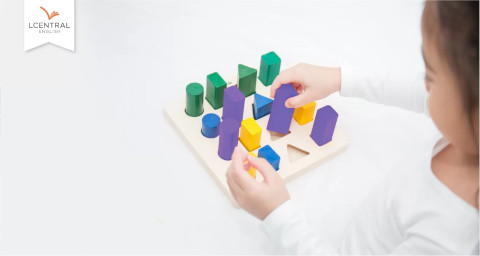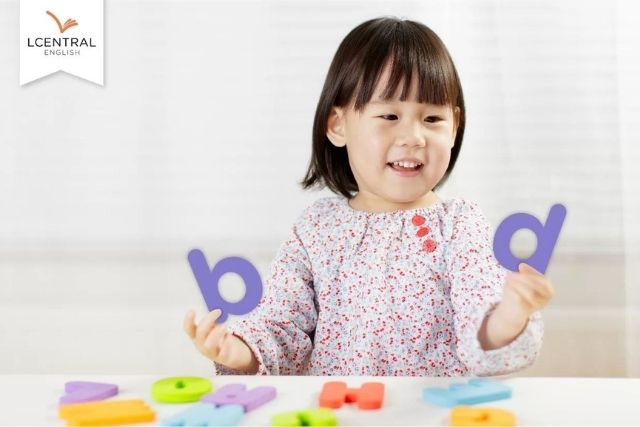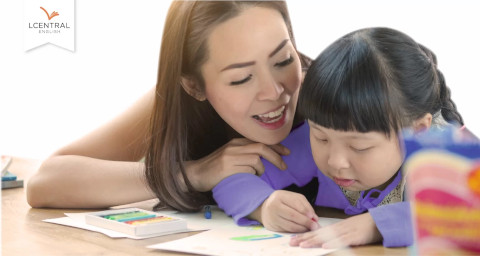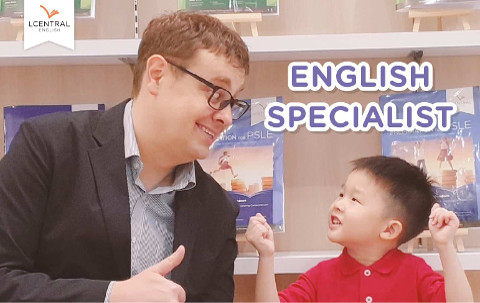Letter reversals can be concerning for parents, but they are not usually a cause for alarm.
Children learning to read and write are demanding a lot of their young brains. Young learners need to be able to recognise all of the upper and lowercase letters as well as be aware of the sounds each letter makes. In addition, there are letter combinations to understand, sight words to memorise and pencil grips to master. All of this can be taxing enough, even before one pauses to consider the fact that written language was designed when human beings had little understanding of how the brain processes what the eyes see.
The Root of the Problem
It is vitally important that humans are able to interpret shapes regardless of the direction those shapes are facing. If a wolf wanders into view, we need to be able to recognise it immediately as such in order to take action. If the wolf is facing left, it’s a wolf. If it’s facing right? Still a wolf. For obvious reasons, the brain is programmed to determine what our eyes are seeing irrespective of the angle from which it is being viewed.
The letters of the alphabet were not designed with this fact in mind, however. For children taking their first steps in deciphering written language, this often leads to confusion.
Letter Reversals
For the reasons mentioned above, letter reversals are fairly commonplace. When viewing young learners’ work, it is not unusual to see letters like ‘r’ ‘c’ ‘f’ and ‘s’ written backwards. The brain does not recognise the direction they face as crucial to their identification. However, as these letters do not have a mirror opposite, children are unlikely to confuse them with another letter; a backward ‘f’ is still an ‘f’.
Letters like ‘b’ and ‘d’ are particularly problematic because they are the same shape in reverse. As with the wolf facing left or right, our brains want to see them as the same thing. The letters ‘p’ and ‘q’ cause a similar problem, as do ‘m’ and ‘w’ (although in this case, they are the same shape facing up and down). When we ask children to differentiate between these shapes based solely on their orientation, we are asking them to override a function that has existed for thousands and thousands of years. It’s little wonder that most children take time to get it right!
How Long Will it Take?
All children learn at different paces. Some will master certain skills quickly while others take time. Even students who seem to be excelling in reading and writing can still confuse ‘b’ and ‘d’ when decoding or spelling words. When a child makes a mistake like this, it’s a good idea to gently remind them verbally. For example, if a child makes the ‘d’ sound when looking at the letter ‘b’ gently remind them by simply naming the letter. On most occasions, the child will then make the correct sound. They do know there is a difference between ‘b’ and ‘d’ but the part of the brain that requires ‘rewiring’ in order to make the distinction has not caught up. This is perfectly normal, and with practice the problem normally resolves itself before a child is nine years old.
How Can I Help?
In addition to gently reminding children when they make a mistake, there are a number of things that parents can do to help their children distinguish between ‘b’ and ‘d’. One of the easiest, especially when teaching letter sounds, is to use the uppercase letters. As they are different shapes, children should have no issues making the correct sound when shown the letter.
Of course, once children begin reading and writing, the lowercase symbols are unavoidable, but there are many strategies available to parents to assist with ‘b’ and ‘d’ confusion. You can remind children that ‘b’ comes first in the alphabet and that both letters ‘always face each other.’ Draw a smiling face in each letter’s loop so the idea of the two letters facing each other is clear to children.
You can also make use of the child’s free hand when they are writing. Making a loop with the thumb and index finger while leaving the other fingers straight will form a ‘b’ with the left hand and a ‘d’ with the right. This strategy can be combined with the teaching of the fact that ‘b’ and ‘d’ always face each other. Other strategies include:
- Making the shape of a bed with the word ‘bed’
- Teaching that b has a ‘belly’ and d has a ‘diaper’
- Placing posters of the letters near objects that begin with that letter (bed, door, etc.)
- Showing children that lowercase ‘b’ ‘fits inside’ uppercase ‘B’
- Demonstrating that when writing ‘d’ we start with a ‘c’
Don’t Panic
The most important thing parents can do to help their children with ‘b’ and ‘d’ is to remember that it is not usually a cause for concern. Many students will reverse letters as the brain reprogrammes itself to recognise them as distinct symbols. Keep reminders gentle and make practice sessions fun and before long, your child will no longer be confusing ‘b’ and ‘d’.
Read the rest of the “Preparing Your Child to Read” four-part series below:
Part 1: Developing Pre-reading Skills
Part 3: Why Phonics is Not Enough?
Part 4: Going Beyond Basic Phonics
This article is brought to you by LCentral.
Book a FREE consultation with an LCentral English specialist to gain insights into your child’s early literacy development and learning needs! Click on this link to schedule an appointment at a centre near you.
* * * * *
Like what you see here? Get parenting tips and stories straight to your inbox! Join our mailing list here.
Want to be heard 👂 and seen 👀 by over 100,000 parents in Singapore? We can help! Leave your contact here and we’ll be in touch.




















































Leave a Comment: